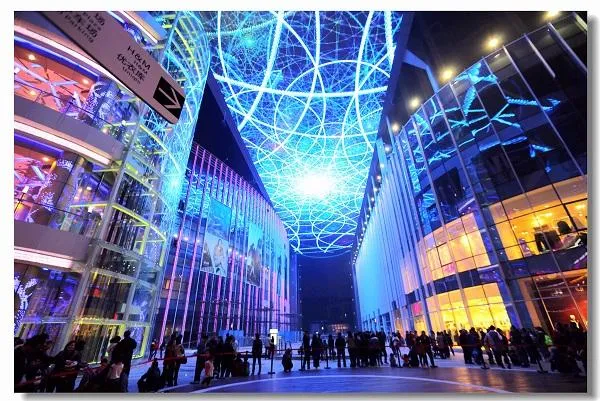Innovative Applications of Transparent LED Displays Revolutionize Visual Communication
Transparent LED displays are transforming the world of visual communication, offering a versatile and engaging medium for businesses and public spaces. These cutting-edge displays combine the benefits of traditional LED screens with the added advantage of transparency, creating a unique blend of functionality and aesthetic appeal. Here, we explore some of the most impactful applications of transparent LED displays across various industries.

Retail Environments
One of the most prominent applications of transparent LED displays is in retail environments. These displays are used to create captivating window displays that attract and engage customers without obstructing the view into the store. Retailers can showcase dynamic advertisements, product promotions, and brand messages while maintaining an open and inviting atmosphere. The transparent nature of these displays allows natural light to pass through, enhancing the overall shopping experience.
Corporate Offices
Transparent LED displays are increasingly being adopted in corporate offices to create modern and sophisticated workspaces. They are often used in lobbies and reception areas to display company information, welcome messages, and real-time data. These displays can also serve as digital partitions, providing a blend of privacy and openness while conveying important information or branding elements.
Architectural Integration
Architects and designers are leveraging transparent LED displays to integrate digital media into building facades and interiors. These displays can be seamlessly incorporated into glass walls, windows, and other transparent surfaces, transforming ordinary structures into dynamic and interactive visual experiences. This application is particularly popular in urban environments, where it can enhance the aesthetic appeal of buildings and contribute to the city’s digital landscape.
Transportation Hubs
Transparent LED displays are being used in transportation hubs such as airports, train stations, and bus terminals to provide real-time information without obstructing the flow of passengers. These displays can show schedules, announcements, advertisements, and emergency information while allowing passengers to see through to other areas. This functionality enhances the overall efficiency and user experience in these busy environments.
Museums and Exhibitions
Museums and exhibition centers are utilizing transparent LED displays to create immersive and interactive exhibits. These displays can be used to overlay digital content on physical artifacts, providing additional information and context without distracting from the original exhibits. This application enhances the educational value of museum visits and engages visitors in new and exciting ways.
Hospitality Industry
Hotels, restaurants, and other hospitality venues are adopting transparent LED displays to enhance guest experiences. In hotels, these displays can be used in lobby areas, elevators, and conference rooms to provide information, promotions, and entertainment. Restaurants can use transparent LED screens for menu displays, promotions, and creating ambiance without compromising the view of the dining area.
Automotive Industry
The automotive industry is exploring the use of transparent LED displays in car windshields and windows. These displays can provide drivers with essential information such as navigation, speed, and safety warnings without obstructing their view of the road. This application has the potential to improve driver safety and enhance the driving experience.
Fashion Shows and Events
In the fashion and events industry, transparent LED displays are being used to create stunning visual effects. They can serve as dynamic backdrops for fashion shows, concerts, and other live events, displaying graphics, videos, and animations that complement the performance. Their transparency allows them to blend seamlessly with the stage design, creating a unique and memorable experience for the audience.
In conclusion, the versatility and innovative potential of transparent LED displays are revolutionizing visual communication across various industries. From retail and corporate offices to transportation hubs and museums, these displays offer a unique combination of transparency and dynamic content delivery that enhances both functionality and aesthetic appeal. As technology continues to advance, we can expect to see even more creative and impactful applications of transparent LED displays in the future.








